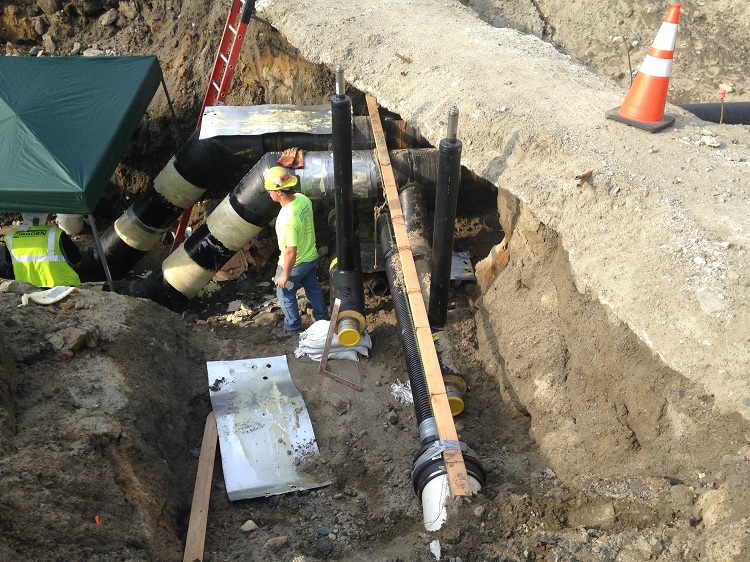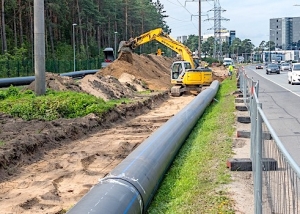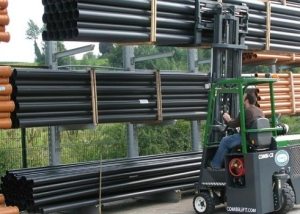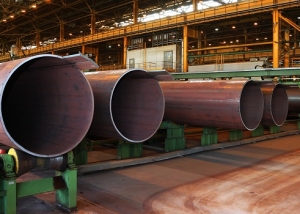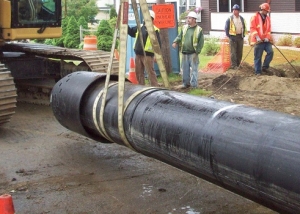Engineering networks - a communication system to ensure the production process or service settlements. Distinguish between internal and external systems of engineering networks:
- power supply;
- outdoor lighting;
- heat supply;
- water supply and sanitation;
- air conditioning and ventilation, dust extraction;
- gas supply;
- communications, communications and signaling;
- pipelines;
- technological conveyors.
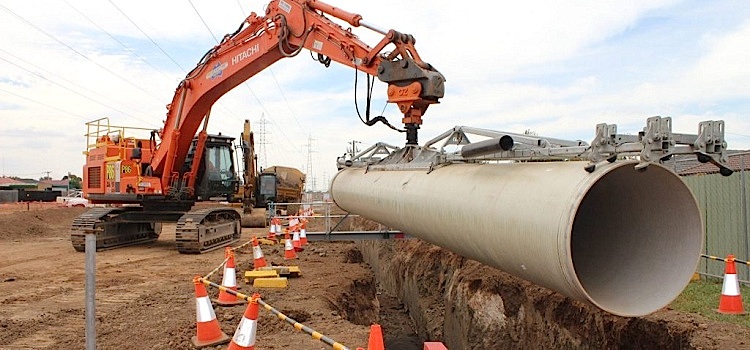
The laying of engineering networks is the arrangement of communications necessary for the life of settlements and the operation of facilities for various purposes
Content
Design and installation of engineering networks
Starting the construction of the facility, you should have a clear idea of the need for such an event as laying utility networks. When designing a project, they take into account already existing communications, consider the possibility of connecting to them. The start of construction implies the availability of heat supply, water supply and sanitation, ventilation, electricity, gas, communications projects. This is a very crucial moment of construction. Correction of errors made at this stage will be costly subsequently. Alterations are best avoided, so laying engineering communications requires careful study of a professional project. After the delivery of the project, installation of communications begins. The technological process of laying engineering networks is carried out in the following mandatory order:
- Water supply is being laid, equipping the facility with the necessary minimum communications.
- A heating system is installed.
- The power supply is connected.
- Sewerage is being brought in, hygiene and access to treatment facilities are ensured.
Water supply
Engineering water supply systems consist of three main elements:
- water supply network;
- water conduits;
- water intake facilities.
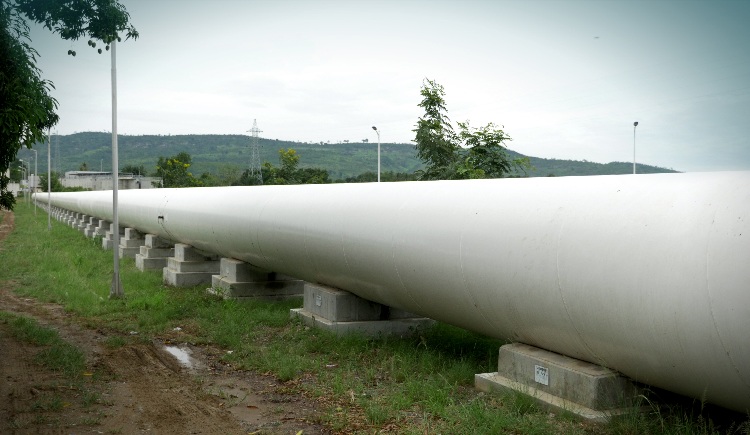
Waterworks are being constructed to provide water to household consumers, industrial and public facilities, fire extinguishing systems
Water supply is the basis of engineering networks. The entire system is laid, starting from water supply communications. These networks are designed to address a number of needs:
- in cold and hot water;
- in the fire safety system.
Providing the facility with water is to connect to the existing central waterway of the village or to create an autonomous system for taking water from a reservoir, a drilled well.
For external water supply networks often use cheap plastic pipes - polypropylene, low pressure polyethylene. When laying the internal water supply, pipes of steel, copper, metal-plastic and PVC are installed. Laying water pipes requires the installation of appropriate valves and fittings.
Important! Particular attention when laying water supply should be given to hidden plumbing. The negligence manifests itself in numerous minor violations in the work of plumbers. This will cause trouble for users and require expensive alterations that cause inconvenience.
Fire safety requires installation and maintenance of hydrants.
Heating
The heating system is an important element of the building structure, ensuring its comfortable functioning.
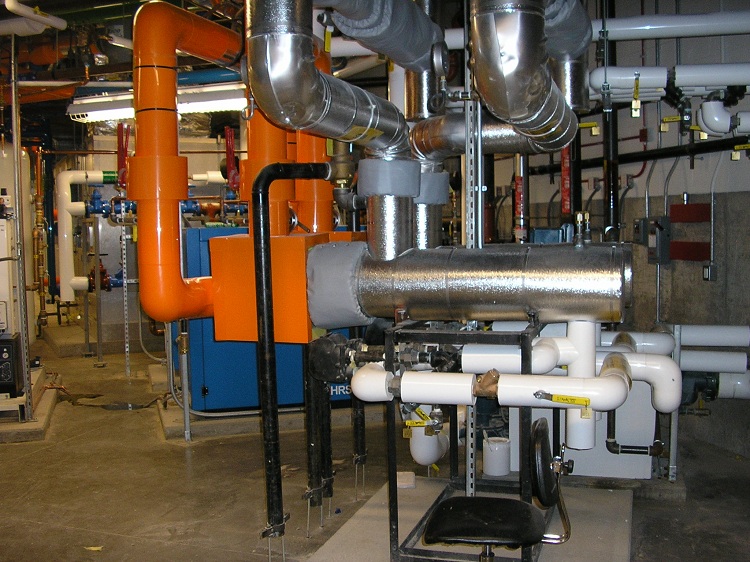
Heating networks both outside and inside buildings should be equipped in such a way as to minimize heat loss
Consider central and local heat supply, including three elements:
- A source of heat.
- Heat networks transporting the coolant to the premises.
- Devices that supply heat to the consumer.
When laying heating mains, considerations of an economic and technical nature are taken into account:
- the main heat pipelines - heating mains - are built closer to the center of thermal loads;
- their length should tend to the minimum, without hindering the development and traffic;
- low cost of construction;
- reliability of operation;
- the ability to provide work in special, emergency situations, during natural disasters;
- taking into account possible heat losses, especially during the construction of external heating networks.
It's important to know! When laying heating networks, it is important to correctly determine the type of radiator, shutoff pipes with connecting fittings.
The installation of an autonomous heating system is associated with the adaptation of a heating system boiler with electric and gas utilities. The typical pressure value in the boiler heating system circuit in one and a half atmospheres should also be taken into account.
Ways of laying heating networks
Having drawn a water supply plan, they immediately begin to draw up a heat supply project. Laying of heating networks can be carried out in several ways and each of them has its own characteristics and rules.
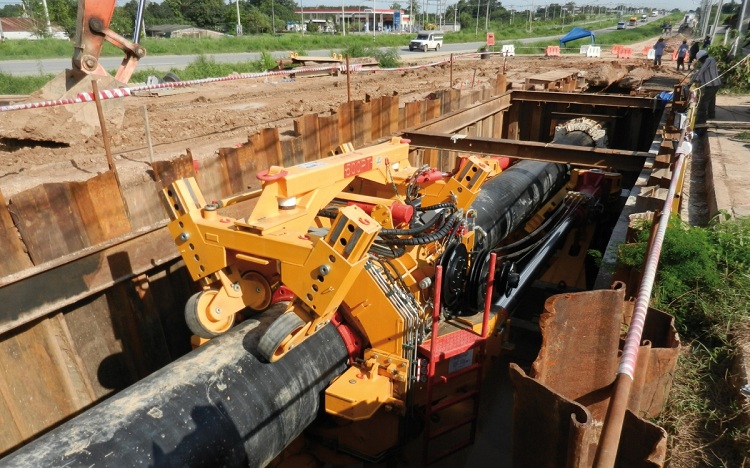
Laying heating networks underground requires the installation of special tunnels or chambers that allow inspection and repair of pipes
- Elevated way. It is used in permafrost or high groundwater levels. And also at facilities located away from the city, or industrial. The heat pipe is installed on supports made of metal, concrete, reinforced concrete. The laying of heating networks in this way has the advantage - the fittings and equipment are open for inspection, it is not necessary to build special cameras. The disadvantage is exposure to weathering and the possibility of mechanical damage, including those associated with vandalism and sabotage.
- Underground method. More common is the trench laying of heating networks - in a tubing way (like metro lines) or at a shallow depth. It allows you to combine several engineering communications in one trench. This significantly reduces the costs of placement and further maintenance of the installed equipment. Trenchless laying is used at the intersection of tram or railway tracks, squares and streets. This type of heating mains is also used in those cases when for some reason it is impossible to develop soil.
The difficulties of underground heating
Underground laying of heating networks is a troublesome and costly process. It requires the use of complex and expensive equipment, qualified personnel. The main problems associated with the underground laying of heating networks:
- work is carried out, as a rule, in the cramped conditions of urban development and previously equipped communications;
- track design is complex;
- placement of linear equipment and fittings is impossible without arranging chambers and pavilions above them;
- ground and surface waters often penetrate into the channels of heating mains and stagnate in them for a long time. This leads to moisture and premature destruction of the insulation layer;
- stray currents provoke pipe corrosion, violating the tightness of the system;
- paved and filled tracks are inconvenient to maintain. Access requires calling special equipment. Repair work requires time and effort, often completely incomparable with the nature of the damage.
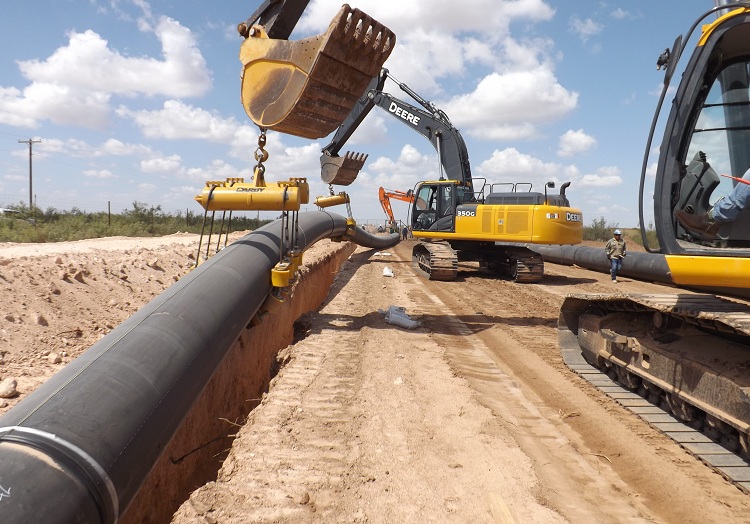
Hidden laying of heating communications is a more time-consuming and costly undertaking than the installation of ground pipelines
Trenchless engineering communications
It is possible to lay pipelines without excavation, without causing damage to the environment. The method of horizontal directional drilling over time will become the main one when laying engineering networks.
The laying of external engineering networks by the trenchless method involves the installation of a HDD installation at the starting point. In the direction of the exit point along a predetermined path, a pilot well breaks through. Sheath tubes are stacked on it with a special machine, pipes or cables are tightened in them. With a track length of up to 10 m, a puncture can also be done manually.
Advantages of trenchless laying:
- process automation;
- high speed;
- the possibility of laying networks at a depth of 20 m eliminates landscape damage, allows you to go under objects where digging trenches is unacceptable;
- the absence of costs for restoration work significantly reduces the total cost;
- no need to interrupt normal life at the place of work;
- emergency situations, damage to previously laid networks become fundamentally impossible.
Pipes for heat supply systems
Underground installation of heat supply requires the use of special pipes that withstand certain temperatures and pressures, resistant to water hammer. For the manufacture of heating pipes use:
- galvanized steel, withstanding pressure up to 12 atmospheres and the highest temperatures. The weak point of steel pipes is threaded connections. Other disadvantages include the impossibility of combining with a system of underfloor heating, the complexity of installation and high cost;
- polypropylene, operating at a pressure of up to 9 atmospheres and a temperature of up to 90-95º C (it is much cheaper than steel and easy to install);
- cross-linked polyethylene, characterized by a low coefficient of thermal expansion. Almost eliminates the possibility of rupture of a pipe made of cross-linked polyethylene. It works reliably at pressures up to 12 atmospheres and temperatures up to 90-95º C. But - not cheap, it belongs to the premium price category;
- metal-plastic is not inferior in resistance to pressure and temperature to cross-linked polyethylene. However, during its installation, the cost of the system increases markedly. Additional fitting connections will be required.
In some cases, the use of thermally insulated pipes may be the best option for external heating networks. Their design combines a heat transfer pipe and insulation, does not require welding during installation.
Power supply
Engineering power supply networks are laid in such a way as to ensure reliable and safe operation of all engineering systems of the facility. Even a momentary power outage can lead to extremely undesirable consequences. A power electrician requires compliance with stringent safety standards. Power supply is a complex that includes sources and means of transmission, conversion and distribution of electricity between consumers. The power supply system consists of:
- power lines;
- substations and distribution devices;
- engineering networks and equipment that increase the efficiency of the system.
Need to know! The laying of electricity at the facility requires the competent organization of the work of internal and external electrical networks.
Construction will be required:
- step-down transformer substation;
- distribution nodes;
- internal networks for supplying consumers with electricity and electric lighting.
Power cables are laid in two ways:
- Underground, in special channels.
- Mounted or air. At the same time, the distance from the support of the power line to the facade of the house should not exceed 20 m.
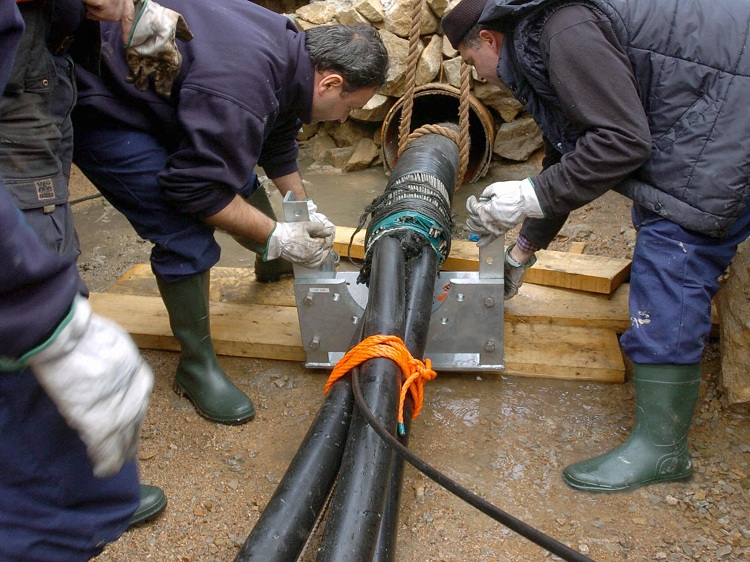
During the installation of electric networks by the underground method, special channels are arranged for laying cables; in order to protect the wires, electrical pipes are also used
Gas supply
Gas networks provide fuel to consumers under a certain pressure and in the required volumes. Most of the population uses natural gas for cooking and heating, heating water. The gas supply system installation includes the installation of:
- subscriber branches. They are connected to the gas distribution network and are designed to provide gas to buildings;
- home gas pipelines. They provide gas transportation inside the building and bringing it to individual household gas appliances.
When laying a gas pipeline, violations of the surface integrity of pipes and joints, insulating coatings must not be allowed. Upon completion of installation, reconstruction, and overhaul of the gas supply system, a leak test of the network by air is mandatory. At the same time, a test of a gas pipeline composed of polyethylene pipes should be carried out no earlier than a day after the last joint is welded.
Natural gas is explosive. The slightest non-compliance with the installation technology and operating requirements of the gas supply system threatens disastrous consequences.
Sewerage
The construction of sewage systems completes the laying of utilities and communications. This stage is important, as its competent execution allows you to create acceptable, comfortable sanitary and hygienic living conditions. External engineering sewage systems are an autonomous complex for the treatment of fecal effluents. Or pipes are simply laid and an insert is made into the central sewage system. The determination of the insertion point into the central sewer and the operation itself should be carried out only by experienced professionals.
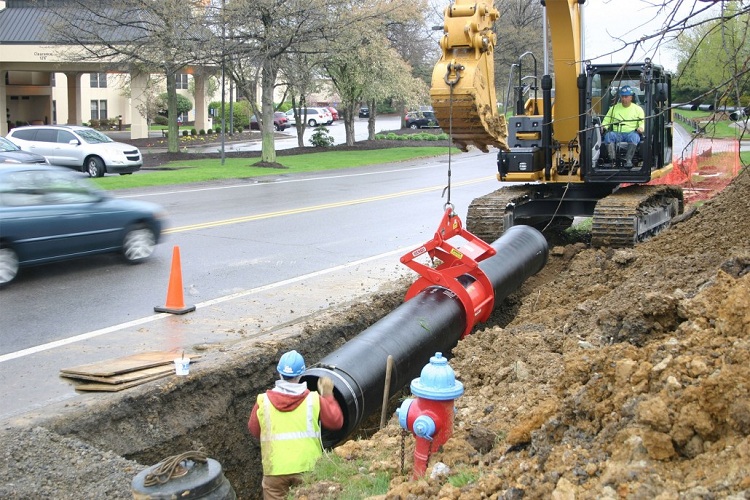
The sewer system of one building, the whole complex or district may be autonomous or connected to a central sewage network
Under the internal sewer understand the system of output laid pipes to the place where the external sewage.
The trouble-free operation of the sewage system requires taking into account a number of conditions when laying:
- pipeline slope;
- pipe depths;
- types of pipes and creating the minimum necessary space for installation;
- volume of wastewater;
- thermal insulation;
- bookmarks of sewer wells.
The laying of engineering networks and communications creates a system that ensures the vital activity of human society. The effectiveness of human labor directly depends on the quality of the communication system. This applies not only to household facilities, but also to the environment, housing. Comfortable living conditions can improve labor productivity, the quality of life of individuals and society as a whole.
